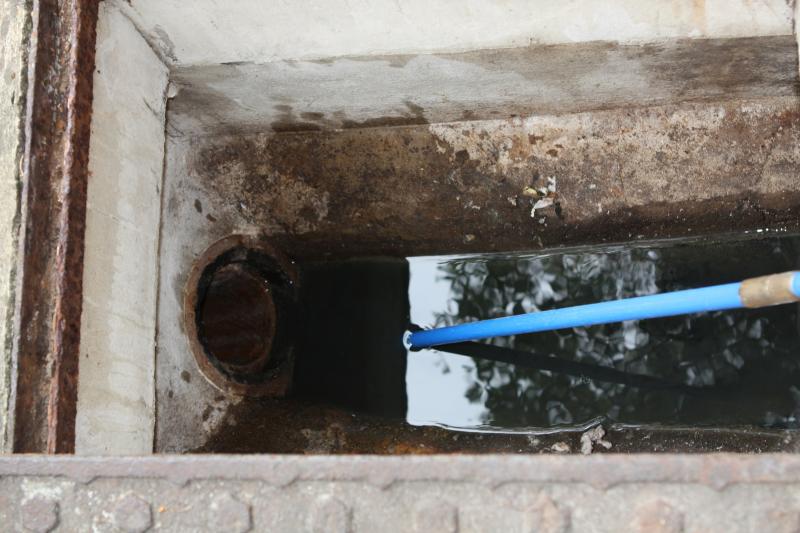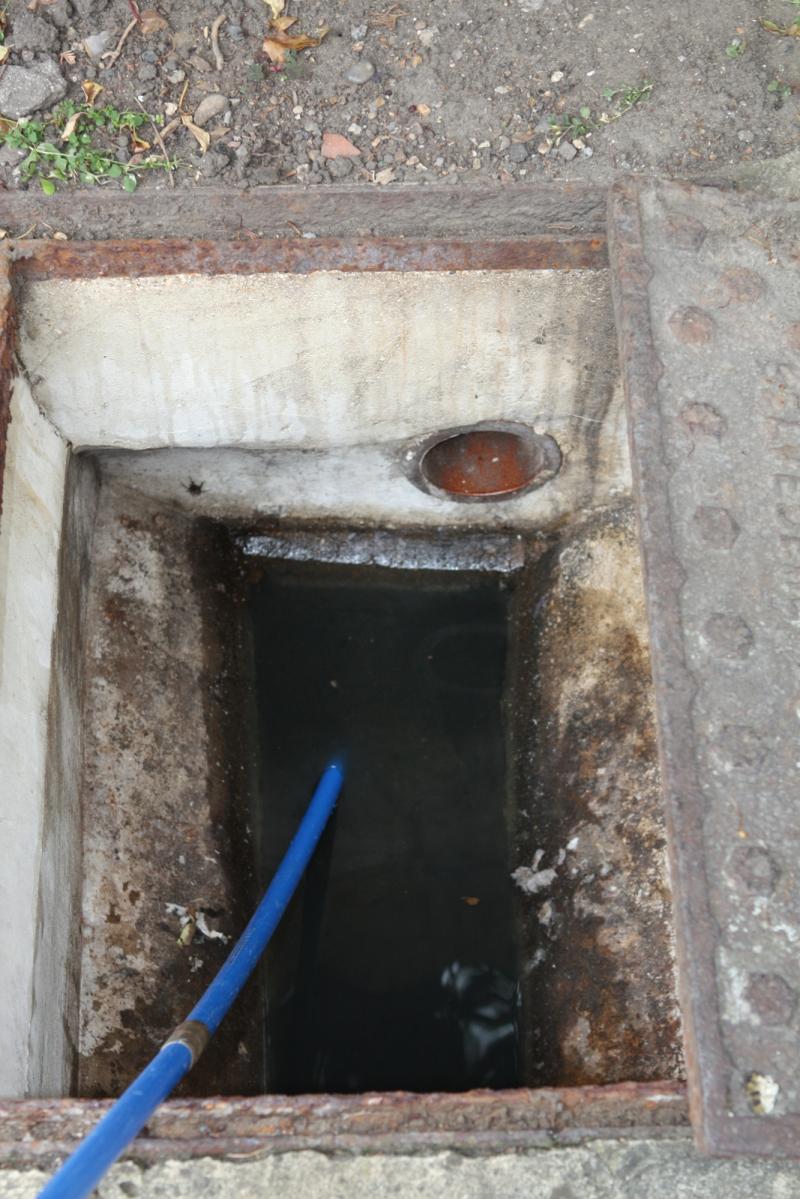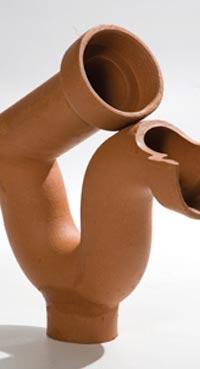J
jashton
Hi. I think I understand the anatomy of an interceptor trap but need confirmation please. I think mine is blocked and is causing venting issues which manifest themselves in smells from the drain near the house when toilets are flushed and sinks emptied etc.
This picture is the exit of the interceptor. The gulley is always full of waste/water
The rod shows where a pipe you can't see is located, i.e. directly under the pipe you can see
This is a picture of the drain entering from the house. The rod is there to show you where the pipe would be if it weren't submerged. The pipe you can see is connected to a nearby 4 foot-ish high SVP in the garden
This is a picture of what I think the interceptor looks like
So, looking at the stock image of an interceptor trap what I believe is that waste flows down the lower of the two inlets, through the swan neck and out the other end. The upper inlet that runs down at 45 degrees is an access port for rodding.
Am I on the right track?
Next Q. When i try to rod down the pipe in pic 1 I hit a lot of silt and crud but if I push on I'm coming up against something solid. I've read comments about interceptors having a teapot lid capping a pipe but assume that fits over the inspection port, not the lower pipe running into the trap itself. It's possible, given the angle my drain rod is at, that what I'm feeling is just the wall of the pipe.
So, am I right about the design of the trap? And what could I be coming up against when I rod the trap? A grate or possibly something solid that shouldn't be there, that is the cause of the blockage? As I said, could just be pipe wall
Currently all my waste gets into the main sewer by overflowing down what I think is an open access port. This means that the last few feet of my drain coming into the interceptor is constantly full of waste. It blocks quite regularly - I have to rod the drain leading from the house probably once every couple of months. When I do it's always at the same point and based on the number of rods I have to use this is in the area of where the drain approaches the interceptor. All of this points very firmly at being the cause of my venting issues
Help greatly appreciated
This picture is the exit of the interceptor. The gulley is always full of waste/water
Untitled
- jashton
- 1
This is a picture of the drain entering from the house. The rod is there to show you where the pipe would be if it weren't submerged. The pipe you can see is connected to a nearby 4 foot-ish high SVP in the garden
Untitled
- jashton
- 1
This is a picture of what I think the interceptor looks like
Untitled
- jashton
- 1
So, looking at the stock image of an interceptor trap what I believe is that waste flows down the lower of the two inlets, through the swan neck and out the other end. The upper inlet that runs down at 45 degrees is an access port for rodding.
Am I on the right track?
Next Q. When i try to rod down the pipe in pic 1 I hit a lot of silt and crud but if I push on I'm coming up against something solid. I've read comments about interceptors having a teapot lid capping a pipe but assume that fits over the inspection port, not the lower pipe running into the trap itself. It's possible, given the angle my drain rod is at, that what I'm feeling is just the wall of the pipe.
So, am I right about the design of the trap? And what could I be coming up against when I rod the trap? A grate or possibly something solid that shouldn't be there, that is the cause of the blockage? As I said, could just be pipe wall
Currently all my waste gets into the main sewer by overflowing down what I think is an open access port. This means that the last few feet of my drain coming into the interceptor is constantly full of waste. It blocks quite regularly - I have to rod the drain leading from the house probably once every couple of months. When I do it's always at the same point and based on the number of rods I have to use this is in the area of where the drain approaches the interceptor. All of this points very firmly at being the cause of my venting issues
Help greatly appreciated





